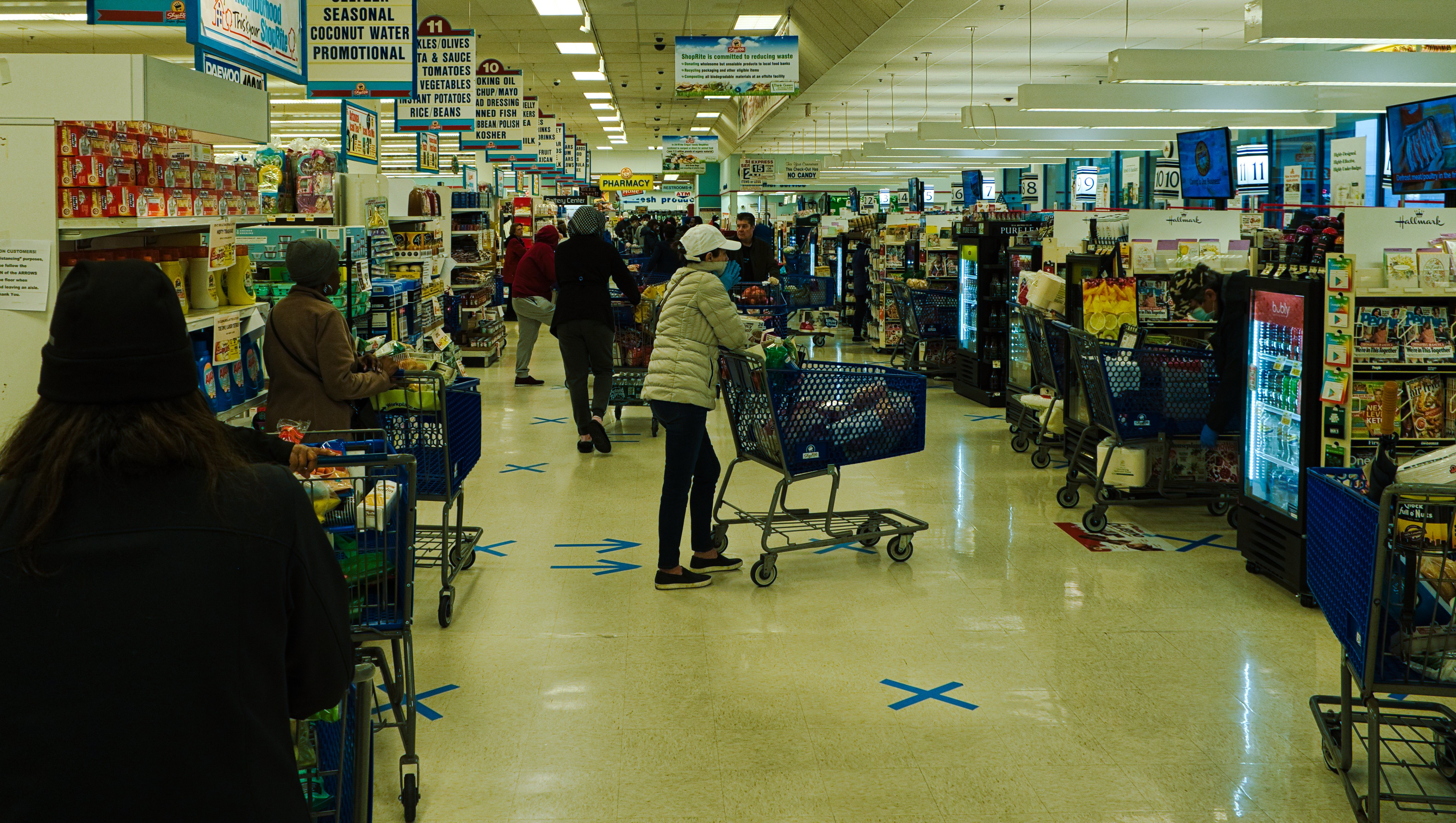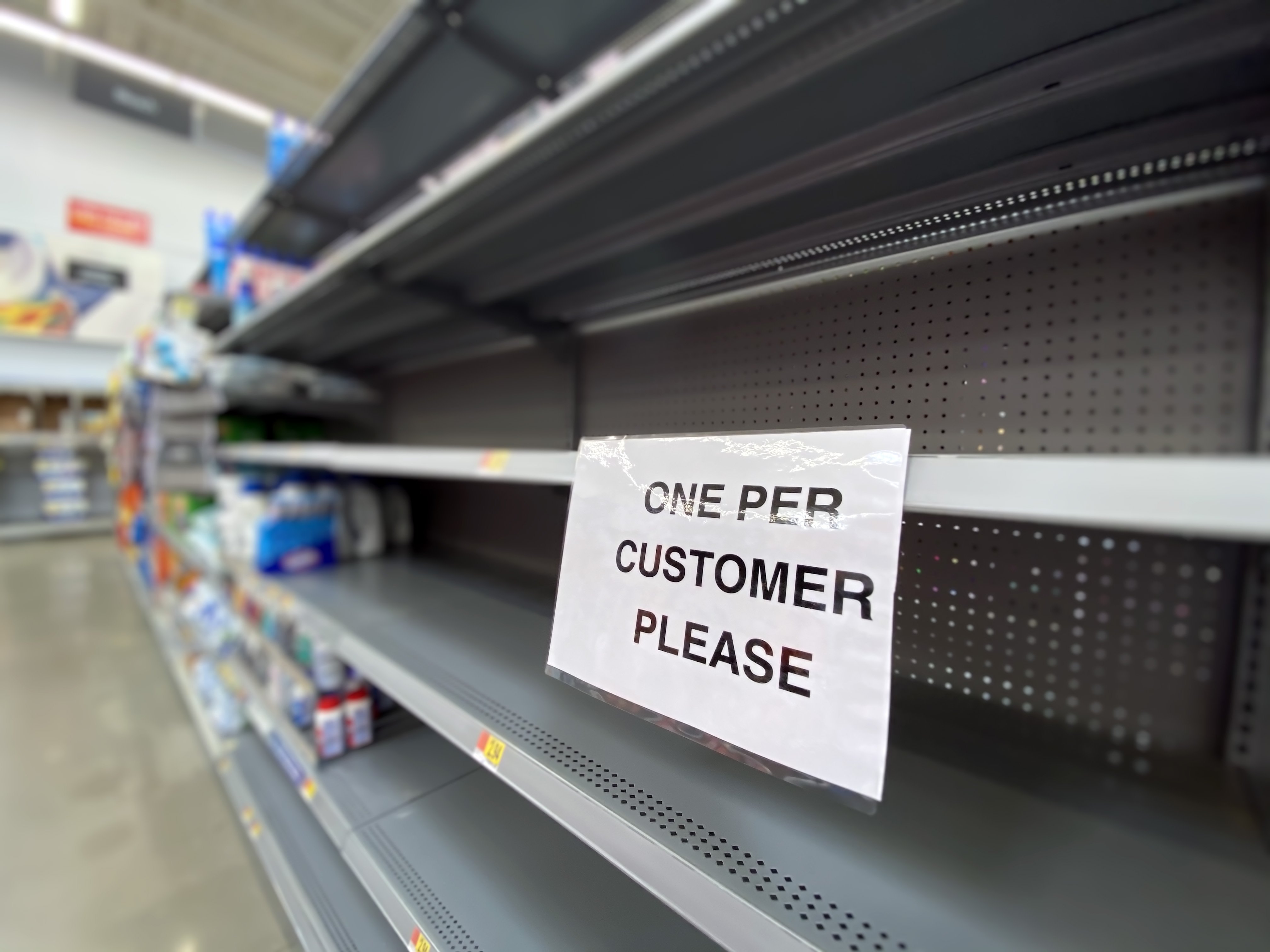A lot happened this weekend, just like it seems to be happening every day for a while now. Zoom was revealed to be a security liability, GrubHub is facing some tough PR over the fees it charges restaurants, and there are early rumors that Apple may be looking to acquire Disney(!). Oh and Will Oremus over at Medium finally solved the great toilet paper mystery once and for all.
And then there is the news that began to emerge over the weekend that administration officials and health experts were revising their shelter-in-place advisory, now encouraging people to further limit, or ideally halt entirely, grocery and pharmacy runs to slow coronavirus’s spread. To this point, consumers had been advised to exercise caution and discretion while shopping for these essential items, but with this shift, these trips will become even more limited.
This doesn’t mean grocery will go the way of food service, almost entirely shutdown, it just means that trips will continue to decrease as basket size increases, which is a trend we’ve already seen play out over the past few weeks as consumers try to get everything in one trip. But as consumers begin to deplete their lockdown food stores, a second grocery shopping boom will be brewing, one that grocers would be wise to anticipate and get ahead of, applying the lessons from the last month and forecasting future surges.
At TrendSource, we have some data and insights based on our grocery industry market research to share about the weeks ahead in the industry, including where we think purchase trends are going and what grocers can do to prepare for the next onslaught. As we pointed out last week when discussing grocery store safety with coronavirus, now, more than ever, grocers need to aggressively implement market research initiatives to best position themselves in a tumultuous and truly frightening moment when so little is controllable and knowable.
To Slow COVID-19, Consumers Advised to Avoid Grocery Stores for Next Two Weeks
Over the weekend, leading health authorities and members of the Trump administration began discouraging grocery and pharmacy trips except when absolutely necessary. Anticipating a gnarly couple of weeks ahead of us as COVID-19 hits the apex we had all feared, this recommendation is in line with previous guidance about limiting non-essential excursions but goes a step further in asking people to even limit these essential activities.

Dr. Deborah Birx, the White House coronavirus response coordinator, did not mince words about grocery shopping and coronavirus: "The next two weeks are extraordinarily important. This is the moment to not be going to the grocery store, not going to the pharmacy, but doing everything you can to keep your family and your friends safe."
On Monday, April 6, the Assistant Secretary for Health at the US Department of Health and Human Services echoed Brix’s suggestion during an appearance on the Today show. In a time where there has been so little agreement about the facts on the ground and the way forward, it seems there is near unanimity on this point, and consumers, for the most part, will follow this guidance. That moment we’d all been preparing for? It’s here.
This means that, over the next couple of weeks, households across the country will turn to their recently-stocked pantry to strategize and streamline their meals, making due with what they have and supplementing it only when absolutely necessary. You don’t need grocery market research to tell you that sales are going to decline this week and into next as most people follow experts’ advice and limit trips even further than before, or, in many cases, entirely.
Once The Coronavirus Curve (HOPEFULLY!) Flattens Out, Large Basket Grocery Trips Will Resume
For many grocery stores, the lull will likely represent a welcome respite, an opportunity to take stock (figuratively) and restock (literally) in preparation for what will likely be a renewed surge as the infection curve hopefully begins to flatten out.
And though it may sound self-serving to point this out, this is the time to be running extensive market research programs to better understand the insanity that has been the last month in the industry, to better prepare for the next surge with supply chain and stocking initiatives, and to make improvements aimed at employee and customer safety. Tragedy and necessity have given grocers a chance to come up for air before they must go back into the deep end.
During this Pandemic, COVID-19 Grocery Industry Market Research is Essential

That’s why grocers are no doubt working day and night to figure out how to keep stock up, particularly for items that have been sold out or rationed over the last several weeks. As part of TrendSource’s grocery industry market research initiatives, we found, for example, that while only roughly 33% of shoppers stopped visiting their regular grocery store, over a quarter of them (27.6%) did so because items were not in stock at their preferred market.
Out-of-stocks can oftentimes not be helped, especially when there is little warning about a shopping surge in truly unprecedented times. But as grocers restock and retool to prepare for the next round, this is the type of loss they would hope to avoid. Reviewing sales and inventory records will obviously help grocers analyze their previous efforts and improve upon them, but tracking customers’ shifting priorities and perceptions will help them anticipate any changes to come.
Consider that, according to our data, 41.4% of customers who reported changing their spending in grocery departments did so by increasing their purchases of canned foods, which, with their shelf-stability and nutritional efficiency, are the perfect pantry stuffer in times of trouble. But grocery trends are dynamic, not static and last week’s priorities will likely not be the same moving forward.
This is because of a simple truth, one playing itself out everywhere right now: The foods that consumers purchase for an extended lockdown are not the first foods they eat in an extended lockdown.
Think of it this way: A lot of canned foods are sitting in a lot of pantries right now, but they are not the first thing people reach for when preparing dinner, even during a quarantine. Items that are not shelf-stable like fresh produce, dairy, and meat, however are likely being exhausted even as we speak. They are fresher, more inviting, and do not make people feel like they have hit the apocalypse, heating cans of pork and beans for the entire family.
This means that the next grocery shopping boom will likely see continued upticks in these departments while things like canned foods slow. Things like cleaning products and toilet paper and the like will continue their sales trajectory because people are using them as fast as they can get them, but there will probably be a lot of condensed soup still in the pantry by the time consumers make their next grocery trip.
I know: I’m staring at a can of cream of mushroom soup I purchased last week. What ever will I do with it?


